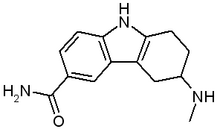Triptans (selective 5-hydroxytryptamine1B/1D serotonin agonists) are a new class of agents used in the treatment of migraine. Despite their high cost, most patients prefer them over ergot derivatives. As the number of available triptans increases, comparisons of the various agents become more important, and evidence-based guidelines are needed to pinpoint the triptan that will be most effective in an individual patient. Ferrari and colleagues compared the efficacy and tolerability of seven triptans that are, or soon will be, available in Europe.
Ferrari and associates systematically reviewed trials of triptans and requested data from all drug manufacturers. The comparisons were finally based on 53 randomized, double-blind, controlled trials of orally administered triptans in recommended clinical doses to treat moderate to severe migraine, with measurement of headache pain on a four-point scale. Since 100 mg of sumatriptan is the primary oral dose in most European countries, this dose was used as the reference for comparison of other triptans.
For headache response (reduction of pain two hours after administration), rizatriptan (10 mg) and eletriptan (80 mg) had better rates than the 59 percent reported for sumatriptan (100 mg). Headache response rates for sumatriptan (50 mg), zolmitriptan (5 mg), and rizatriptan (5 mg) were comparable to the response rate for sumatriptan (100 mg). Response rates were lower for naratriptan (2.5 mg), eletriptan (20 mg), and frovatriptan (2.5 mg; information from abstracts only) than for sumatriptan (100 mg).
Two hours after taking 100 mg of sumatriptan, 29 percent of patients reported complete relief of pain. Better pain-free rates were achieved with almotriptan (12.5 mg), eletriptan (80 mg), and rizatriptan (10 mg). Compared with sumatriptan (100 mg), recurrence rates were lower for eletriptan (40 and 80 mg) but higher for rizatriptan (5 and 10 mg). In the few available studies of the efficacy of triptans in multiple attacks, consistent lack of response was rare.
The reference dose of sumatriptan was calculated to have a 13 percent rate of adverse effects. For central nervous system adverse effects, the rate of adverse events was higher for eletriptan and lower for almotriptan. The adverse effect rates for most triptans overlapped.
The possibility of coronary vasoconstriction is the primary concern with all triptans, although it is a lesser concern than with ergot derivatives. Triptans should not be used in patients with cardiovascular disease or major risk factors for cardiovascular disease.
The authors concluded that orally administered triptans are more effective than placebo and are generally well tolerated (see accompanying table). The likelihood of success appears to be greatest with rizatriptan (10 mg), eletriptan (80 mg), and almotriptan (12.5 mg). Because individual responses to triptans vary, more than one drug may have to be tried before treatment is successful.
Ferrari MD, et al. Oral triptans (serotonin 5-HT1B/1D agonists) in acute migraine treatment: a meta-analysis of 53 trials. Lancet November 17, 2001;358:1668-75.
EDITOR'S NOTE: This study provides statistics that can give patients realistic expectations about migraine treatment with triptans. Encouraged by the publicity "hype" and desperate for relief, many patients with migraine expect immediate and complete cure from these expensive medications. As the authors pointed out, the triptan must be carefully selected to fit the individual patient's needs. Furthermore, only one half to two thirds of patients have relief of pain within two hours of taking a triptan. Those patients are the fortunate nonvomiters and those who are willing to tolerate the adverse effects and risk of recurrence.
Every patient with migraine deserves a full discussion of all treatment options. The three major treatment strategies (analgesia/symptom control, ergotamines, and triptans) have advantages and disadvantages. The trick is to find the optimal treatment for an individual patient. Although some experts now recommend assessing degree of disability (e.g., using the Midas scale) and using triptans in patients who have the most severe migraine, giving patients the facts and allowing them to chose among effective therapies can be more successful than insisting on the physician's choice of therapy. In one famous study, aspirin and metoclopramide produced pain relief comparable to that of sumatriptan, with fewer side effects and much lower costs (Tfetl-Hansen P, Henry P, Mulder LJ, Scheldewaert RG, Schoenen J, Chazot G. The effectiveness of combined oral lysine acetylsalicylate and metoclopramide compared with oral sumatriptan for migraine. Lancet 1995;346:923-6).
The choice of therapy in migraine can be bewildering for both patients and physicians. Evidence-based guidelines and advice are available on the Web sites of the American Academy of Family Physicians (www.aafp. org) and the American Academy of Neurology (www.aan.com). Additional resources, including the Midas scale and headache diaries, are available on the Web sites of the American Council for Headache Education (www.achenet.org) and the American Headache Society (www.ahsnet. org). Guidelines for the management of complicated migraine and other types of headache can be found on the Web site of the British Association for the Study of Headache (www.bash.org.uk), but, as in this article, there may be differences in available drugs or drug names.--A.D.W.
COPYRIGHT 2002 American Academy of Family Physicians
COPYRIGHT 2002 Gale Group



